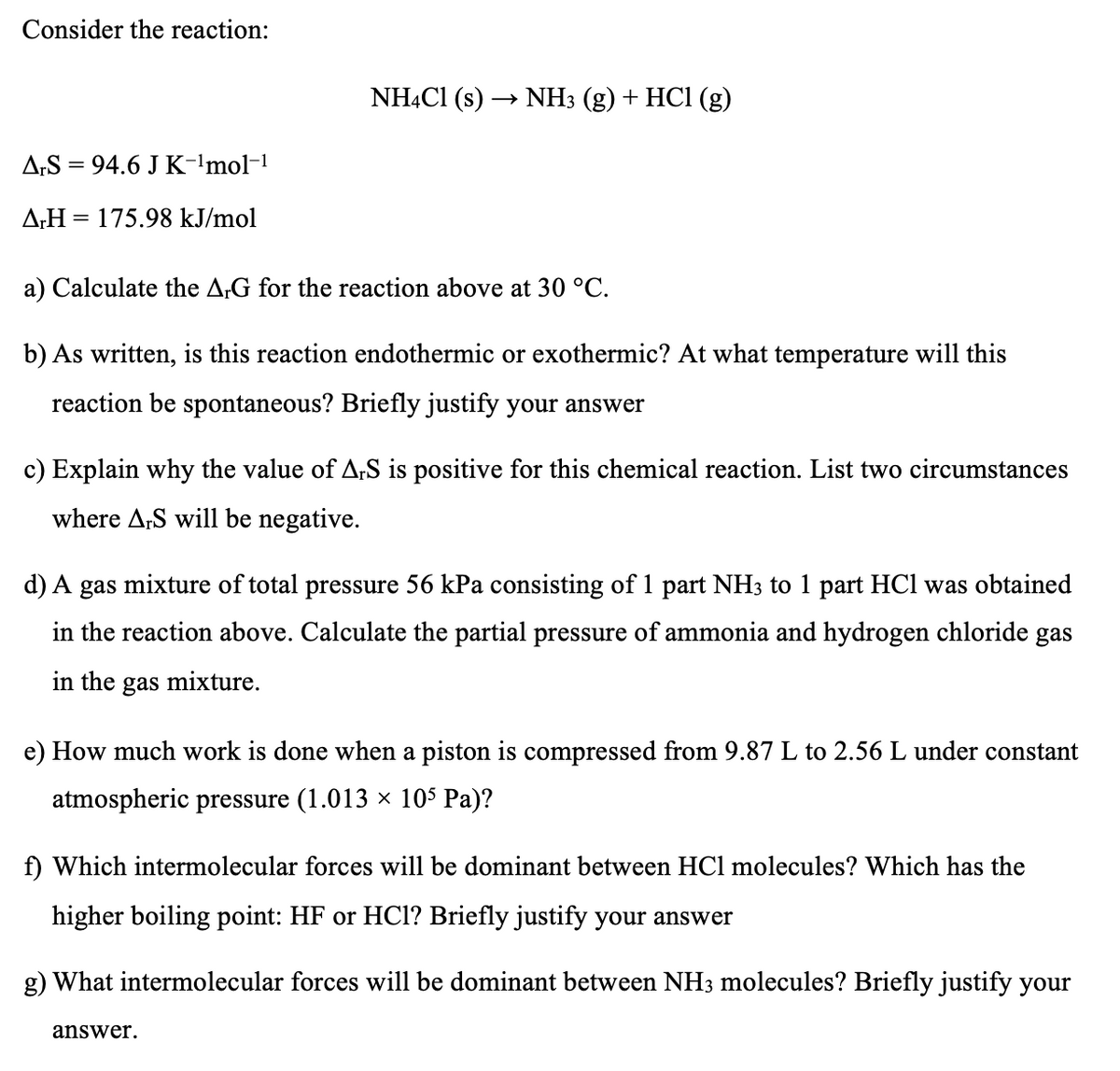Consider the reaction: NH4Cl (s) → NH3 (g) + HCl (g) ArS 94.6 J K-¹mol-¹ A,H= 175.98 kJ/mol a) Calculate the A,G for the reaction above at 30 °C. b) As written, is this reaction endothermic or exothermic? At what temperature will this reaction be spontaneous? Briefly justify your answer c) Explain why the value of A,S is positive for this chemical reaction. List two circumstances where A-S will be negative.

Trending now
This is a popular solution!
Step by step
Solved in 4 steps with 1 images

Consider the reaction: NH4Cl (s) → NH3 (g) + HCl (g) ArS 94.6 J K-¹mol-¹ = ArH= 175.98 kJ/mol
d) A gas mixture of total pressure 56 kPa consisting of 1 part NH3 to 1 part HCl was obtained in the reaction above. Calculate the partial pressure of ammonia and hydrogen chloride gas in the gas mixture.
e) How much work is done when a piston is compressed from 9.87 L to 2.56 L under constant atmospheric pressure (1.013 × 105 Pa)?
f) Which intermolecular forces will be dominant between HCl molecules? Which has the higher boiling point: HF or HCl? Briefly justify your answer g) What intermolecular forces will be dominant between NH3 molecules? Briefly justify your answer.








